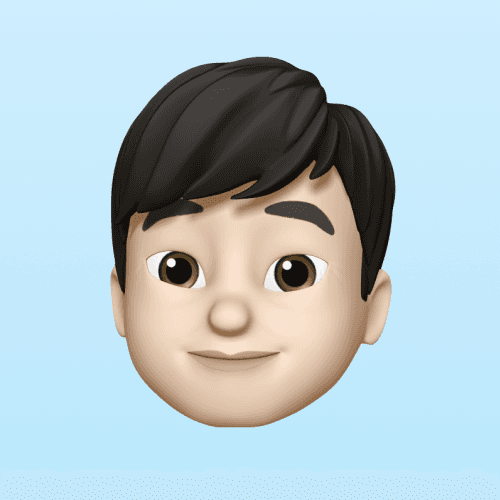OVERVIEW
Generative research
Insights into Free-Time Activity Preferences: Seeking Connection and Escaping Routines
“
If there is someone I want to meet, I would go even if this activity begins in 20 min. It really is about people not the activity itself.
”
“
I don’t like going out alone, such as going for a walk. Doing it alone would make it like a task.
”
UNCOVER THE TARGETS
Turning Routine Fatigue into a Refreshing Opportunity
To better understand the context of these opportunities and identify specific challenges, another round of interviews was conducted.
• The opportunities identified were limited and largely beyond my scope to address.
• They often involved interpersonal conflicts and they are rare scenarios. People tend to go out with others’ company, but they don’t usually have problems asking others out or arranging the schedule, and they rarely have conflicts.
• While users’ approaches to escape monotony varied based on energy levels, I observed a common pattern:
When feeling fed up with daily routines, people are usually drained due to busy life, so they tend to prefer simple, low-energy activities to refresh themselves.
• This highlights a need for easily accessible, low-effort solutions that add variety and novelty to their lives. Based on this insight, I chose this opportunity as my focus.
Who has this problem?
The target users are individuals feeling fatigued from repetitive routines, seeking low-energy ways to break free and add freshness to their lives. They are usually busy professionals who feel stuck in monotonous routines mainly due to demanding, repetitive jobs. They seek low-effort ways to break free from boredom, refresh their perspective, and rediscover small joys in daily life without adding stress to their busy schedules.
The Cost of Boredom and Why Current Solutions Fail
Survey
To deepen my understanding of current solutions and behavior patterns, I conducted a survey. Key insights include:
Frequency of boredom: 50% feel bored daily, 33.3% weekly.
Common responses to boredom:
• 33.3% rest or sleep
• 33.3% engage in light entertainment or small activities
• 9.6% seek advice from friends
• 9.6% socialize or attend local events
Openness to advice: 83.3% are likely to try suggestions from others.
These findings highlight the widespread nature of the problem.
Background Research
Persistent boredom can lead to:
Emotional distress (e.g., depression, anxiety)
Mental fatigue
Reduced motivation and productivity
Lower overall well-being
Ideation
Interactive and Effortless: A Concept for Everyday Inspiration
With the scope narrowed, it was time to ideate solutions.
Based on the insights gathered, I brainstormed multiple possibilities, such as sleeping and resting, interacting with friends, exercising, meditation... ... But most of them are not directly tackling with daily monotony, they are more about overall mental well being. Besides, there are already a lot of products working on this, such as “Betterhelp”, “Headspace”.
Sketches
Prototype pages
Testing the Spark
Do Small Tips Make a Big Impact? Promising, But Needs Refinement
After building the prototype, I conducted user tests to validate the opportunity and solution. The test aimed to assess whether the small, unusual tips on the cards made users feel refreshed and if the daily book, movie, and song recommendations were helpful.
The results confirmed the opportunity and solution. All participants acknowledged experiencing the problem to some extent.
Feature 1 - Card drawing :
I have to admit that, it is hard to set the context for participants, as they are not really bored when they get involved in the test. So I set the success to be that participants should feel different or inspired when they see those cards.
As a result, participants expressed strong interest in the card content, which sparked their curiosity and inspiration.
“
As long as it’s something unusual to me, I would feel inspired and want to try it out.
”

“
It’s like a game, when you reveal a card, it’s something different from your expectation.
”

However, all the participants wanted to see more cards per day instead of 1 per section per day.
Besides, different participants have different preferences towards cards’ content. Some prefer things they can do alone, such as to use the non-dominant hand to brush teeth. But some would like to interact with people. And they not only want tips on cards to be social interactive but also the app itself.
“
I want more social interaction both on the cards’ suggestions, and the app itself. Doing everything alone would be boring for me.
”

“
It would be really great, if I can receive warm messages from friends or other users that their day is lit up because of my cards.
”

Feature 2 - Daily recommendations :
Opinions on the daily recommendations were mixed, with only 50% finding them useful. Some participants have their plans on books to read or have very particular lists of music to listen to. While the other are quite casual with this and would like to see recommendations.
Improvements can be done based on feedback:
“
The design is simple but not fun enough. Cards look like flashcards. I want to see more fun elements on main pages.
”

REVISION
A Fresh Look: Enriched Content and Enhanced Design
Testing the Tweaks
From Validation to Strategy: Refining Features and Managing Risks
After revising the prototype, I conducted further user tests to address two key questions:
How many cards per day is ideal?
By increasing the daily card count per section (from friends/the world) to 4, participants no longer expressed the need for more cards.
They agreed that 3–5 cards per section per day were appropriate, but the content needs to be appealing enough.
Is the social interaction feature effective?
Social feature was added because of the strong need expressed by users, and I thought it could be a supplement of the original solution.
The feature allowing users to start conversations with non-anonymous card authors proved appealing to most participants, highlighting its potential for meaningful interactions. They also want to share cards with friends.
Final design
Here is the prototype after the revision on UI and replacement of social conversation feature with sharing cards:
Reveal cards and share with mutual connections
Get a daily dose of entertainment recommendations
What's next:
Takeaways
Lost and Found: Lessons in Discovery
Working through a design sprint inspired by the methods in Continuous Discovery Habits has been an eye-opening experience. Discovery taught me a lot, but it often left me feeling lost at times. Generative research proved to be an excellent tool for exploring opportunities, but it sometimes led to discussions that were too broad or abstract to be actionable.
Seemingly promising opportunities may turn out to be unimportant or too complex to tackle, which is why quick validation is essential. Falling in love with problems needs practice. And it’s easy to fall into the confirmation bias and escalating commitment. The most essential thing I learned is that the goal for a UX designer isn’t building a perfect solution—it’s avoiding wasted effort on the wrong ones.












